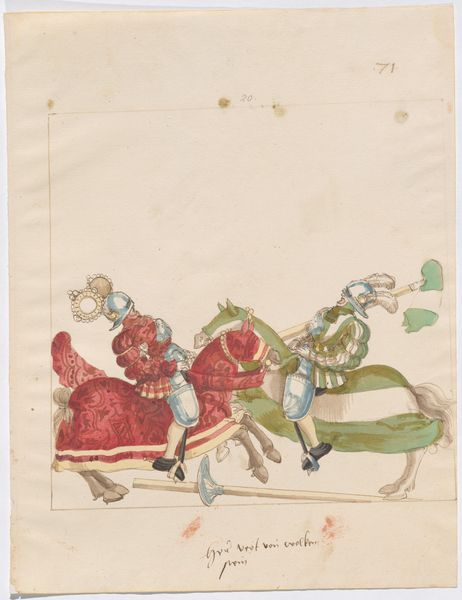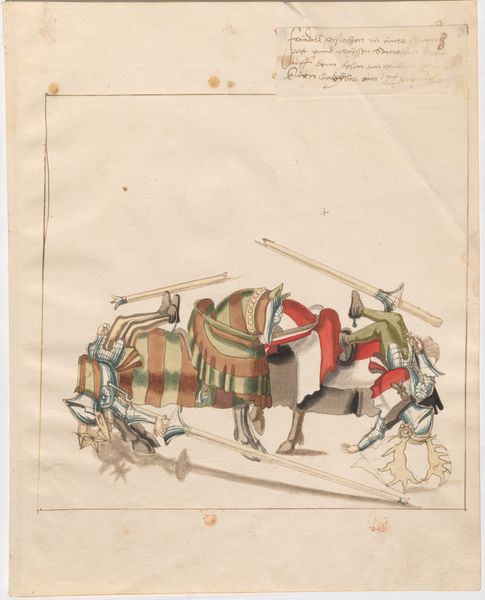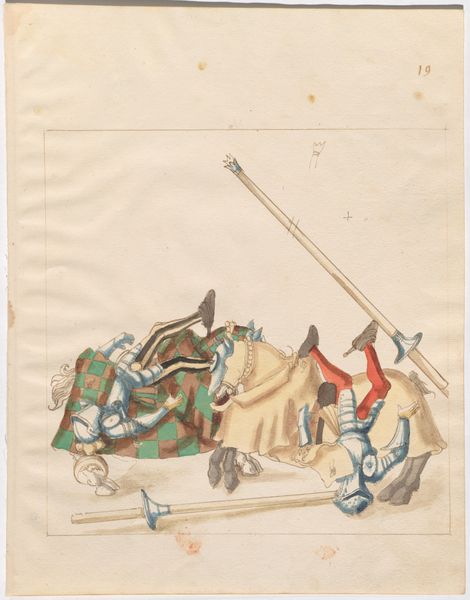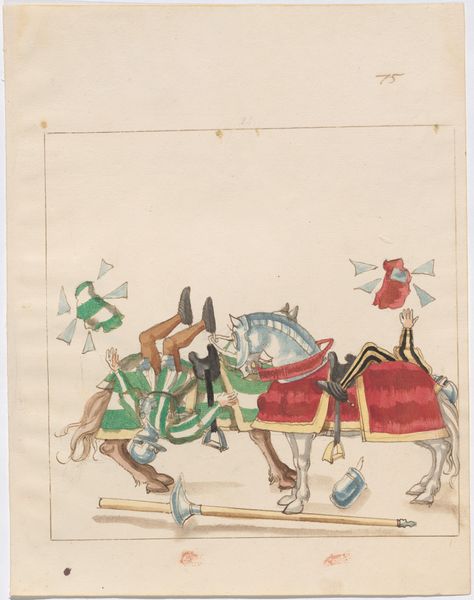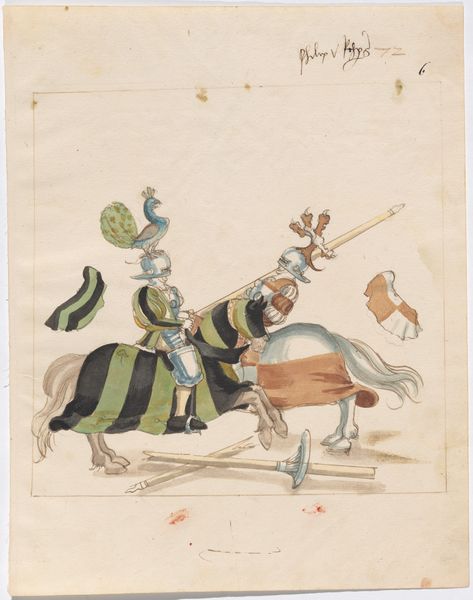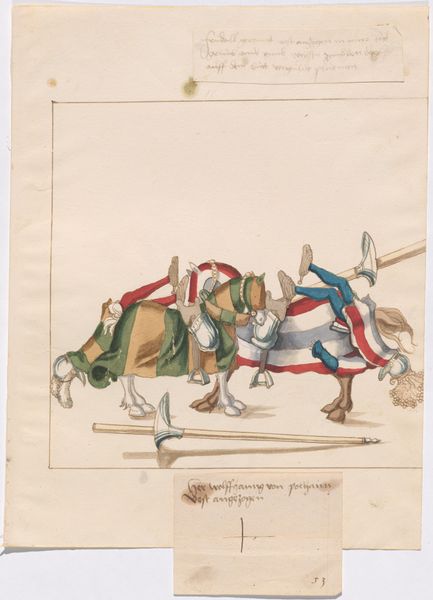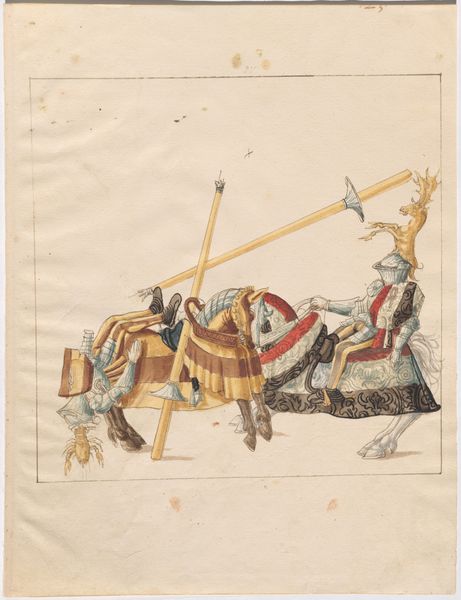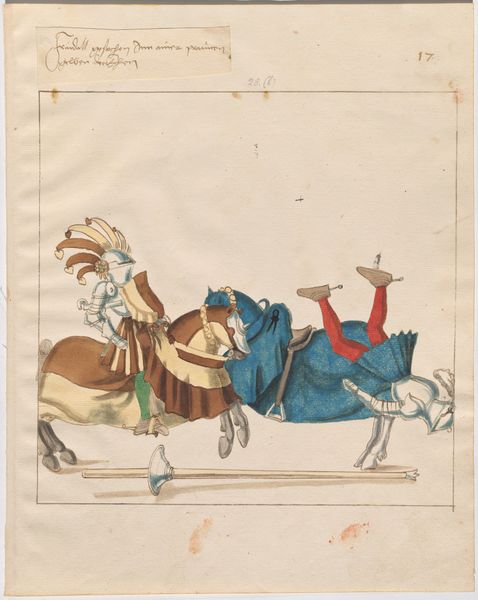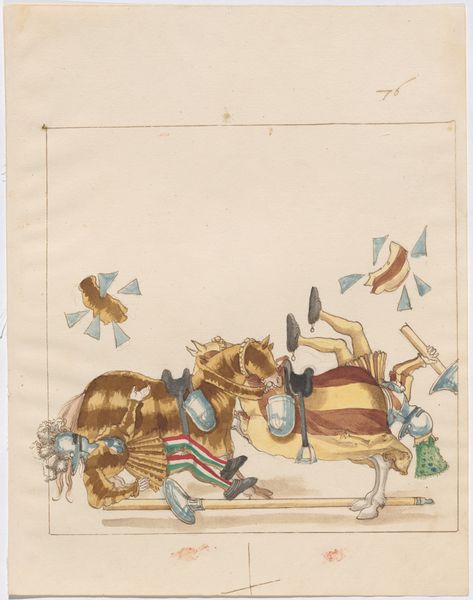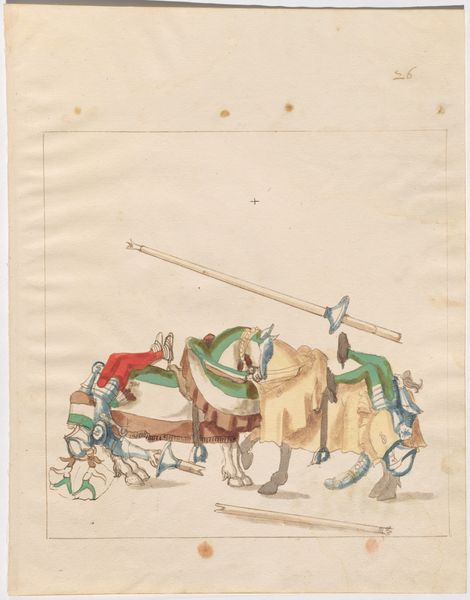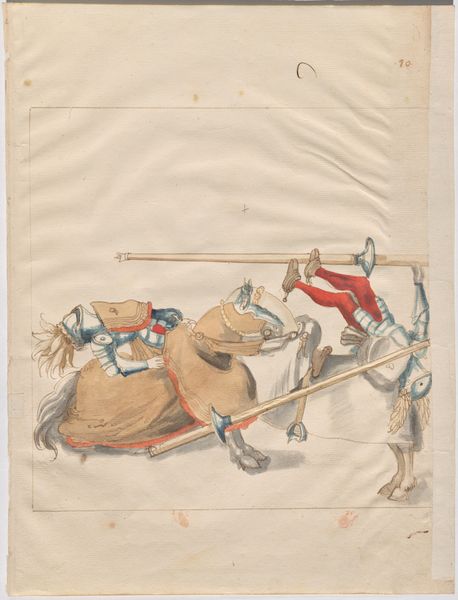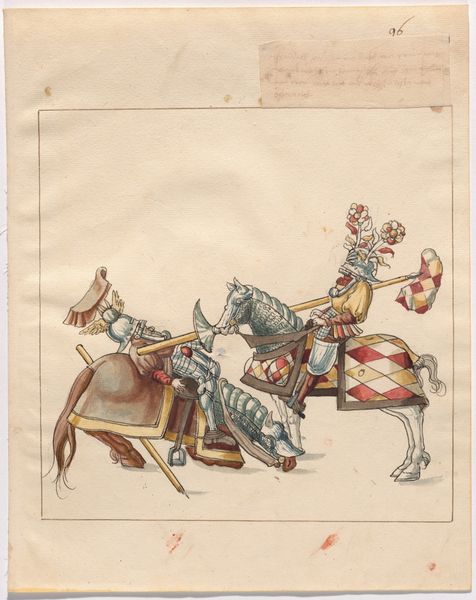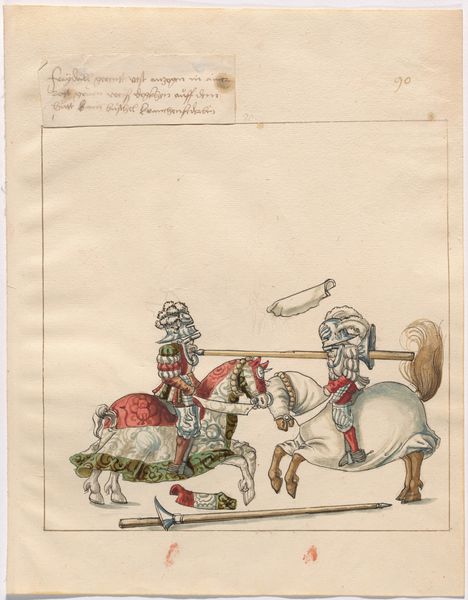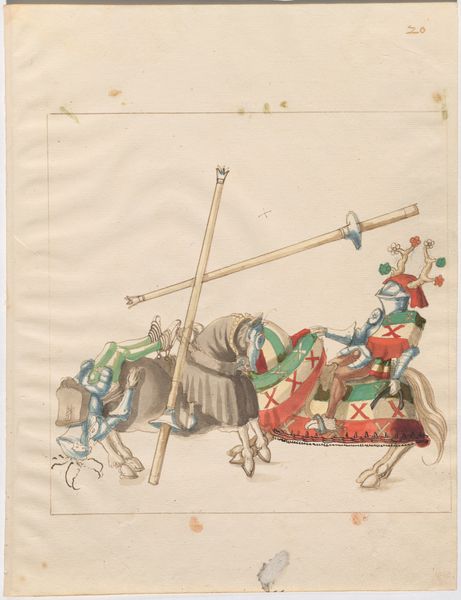
drawing, watercolor
#
drawing
#
medieval
#
water colours
#
landscape
#
figuration
#
watercolor
#
watercolour illustration
#
history-painting
Dimensions: sheet: 33.2 × 26.2 cm (13 1/16 × 10 5/16 in.)
Copyright: National Gallery of Art: CC0 1.0
Editor: Here we have "German Joust of Peace," a watercolor drawing from around 1512 to 1515. It’s… comical! The figures seem almost cartoonish. What do you see in this piece beyond just a simple depiction of a joust? Curator: Beyond the surface-level depiction, this work unveils interesting complexities related to social status, gender roles, and power dynamics in the context of 16th-century Germany. The apparent 'peaceful' joust belies the violence inherent in patriarchal systems of the time. Editor: How so? Curator: Think about who participates in jousts: primarily men of nobility and means. Jousts are performances of masculinity and assertions of power, often at the expense of others. They are not solely about sport; they’re intricately woven into the fabric of class and gender hierarchies. Look at the elaborate costuming and gear; what statements are they making? Editor: Well, the colors and patterns seem like a way to distinguish oneself and signal allegiance or family lines. Almost like wearable heraldry. Curator: Precisely! It's also pertinent to consider how these displays of male dominance were funded, sustained by systems that often marginalized women and the lower classes. The "peace" of the joust exists within a society riddled with inequality. What about the fact that, like any physical entertainment, this event depends on the exploitation of bodies? Editor: I hadn't really considered those power dynamics so explicitly within this seemingly lighthearted scene. Curator: This work then can function as an entry point for discussions surrounding class, identity, and the performance of gender in historical contexts. What looks like an innocuous game opens up so much more. Editor: It’s fascinating how unpacking the social context really transforms how you perceive the art! Curator: Exactly! By viewing historical pieces through the lens of contemporary issues, like gender inequality, one discovers resonances that bring new life and relevance to works that might otherwise seem confined to history books.
Comments
No comments
Be the first to comment and join the conversation on the ultimate creative platform.
